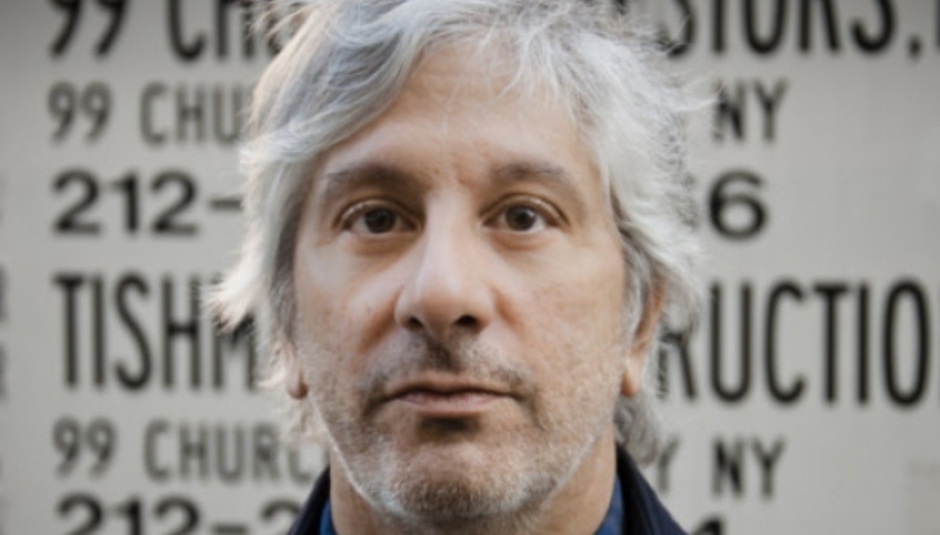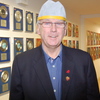Lee Ranaldo, legendary axeman and noisemaker for Sonic Youth - among countless other collaborators - dropped a new solo album, Between the Times and the Tides earlier in the year (read the DiS review here). Starting off as a slightly more straight-forward but no less exciting project from the man; the LP blossomed into a dreamy and melodic collaborative effort, featuring the likes of Nels Cline, Steve Shelley and Alan Licht.
This month he visits the UK with glittering motley crew in tow to give the album a proper live airing. A little while back we spoke to Lee about the making of the record, the draw of the creative process, the Occupy movement and what the future holds for Sonic Youth.
You’ve said that Between the Times and the Tides started as a result of writing a few songs for a performance at Midi festival. How did that performance come about and did you have a set idea of what you wanted those songs to be?
Well, there wasn’t any specific idea when I started. Friends of mine asked me if I wanted to go over and play that festival and they specifically requested an acoustic performance, which is not something I normally do. So eventually I said I would do it, and when I was practicing for it, I thought I would just perform a bunch of Sonic Youth songs that I’ve written over the years and just play ‘em on acoustic guitar. As I was practicing for it this new song popped out called ‘Lost’ which is one of the songs on the new record.
It just kinda came out of nowhere, and I was like ‘that’s interesting’; a new song just sorta popped out. So, I worked on it a little bit and two weeks later I opened my show over there with it. It just kind of started something rolling. I don’t really know how to explain it any other way; I wasn’t really planning to try and make a solo/acoustic record. It’s something I’ve long wanted to do but at that moment in time I wasn’t looking for it to happen or anything like that. But when this song came out and then two weeks later I was actually playing it on stage, it just opened up a faucet or something and a bunch of songs came rolling out over the summer.
I just kinda kept collecting them and working on ‘em and by the fall I had a group of songs worth taking to my studio and recording. I thought originally I was going to make a solo acoustic record because it seemed like something simple, something I could handle easily, and one thing just sort of naturally led to another, which was really the state of the whole process. Eventually Steve Shelley started drumming on it and I had a rhythm section; and then we had a bunch of basic tracks so I asked Nels Cline, Alan Licht and John Medeski to come in and play on those and one thing just led to another, it was really cool.
It’s interesting because I don’t think many people could get such an esteemed group of musicians together for what seems like a casual project.
Well, I guess so. I mean, when I was thinking of who to ask I really just called on friends of mine. Even though I’ve been making records and playing music for some time, I’ve never really done a record like this so it was a pretty big deal. And the process was pretty comfortable all the way along and I really didn’t want that to change. I didn’t want to try and hire anyone that I thought could play in a specific way, I really felt more like ‘lemme ask some close friends to come in and play’, then it’ll be comfortable for me and I’ll know I’ve got a supportive environment around me. They’re all people I’ve worked with in a number of different capacities over the years so it was more that kind of thing.
At what point did you decide to let other people in on it as opposed just having it as you own solo project? Was it just down to the fact that the songs seemed like they needed to be bigger or did you simply just fancy getting other people involved?
Well, I think it was a little bit of both. I was demoing them on acoustic guitar and a couple of them just gave me the impression that y’know, this song might be cool with a beat behind it. I was in the Sonic Youth studio and Steve was often around and he was hearing some of the basics, the acoustic guitar tracks, and really digging ‘em so it just kinda started by asking him to come in for a day and drum on some these just so I can hear what it sounds like. It sounded good with drums so I thought a couple of these could become band songs. Initially I was hesitant to even consider going down that road because it seemed like such a big responsibility putting a band together and getting a bunch of musicians to play. I’ve been in such an amazing band all these years that fell together fairly naturally, so the idea of trying to put together a band to do this was a little daunting but in this case it sort of rolled naturally from one thing to the next.
Do you think that plays quite an important part in the sound then; that it all just sort of fell together?
I think so. To me when I listen to it, it feels pretty naturalistic. I mean, I don’t get a sense too much of it being forced in any way. I felt like the songs, from the beginning, were pretty strong as songs. I’ve played these already once at least solo acoustic and I wanted to build them up into this band kind of thing. Also, it’s a really fun process to work on songs like that, to get people into the studio, to see what people contribute to it; different voices and stuff. There’s no doubt that everybody contributed stuff that really made the songs so much better.
You’ve said with this album it was more important for you to enjoy the actual process of making the record as well as enjoying how it turned out. It’s interesting because it’s often an element that some people might not even pay attention to when listening to the finished product.
It’s true. Having been involved in as many records as I have at this point, if the process isn’t enjoyable, it’s all for nothing in a way. It’s such a fun thing to see a song grow from something that pops out of your fingers on a guitar and blossoms into a fully-formed song; a lushly-arranged song with a lot of different interesting parts, it’s kinda like building a house in a way. You start with the foundation and you kinda build on top of it and if you enjoy that kind of thing then it’s a really interesting process. I definitely enjoyed it; it allowed me indulge both songwriting aspects and production aspects; all aspects of music I really love. And now it’s allowing me to look forward to enjoying the performance aspects of the same music.
The song ‘Shouts’ was originally derived from a photograph of a couple kissing on the ground taken during hockey riots in Canada a couple of years back and you managed to alter that that into something that was reflective of the Occupy movement – can you tell me how that song came about?
The Occupy New York site – at Zuccotti Park - was pretty close to where I live so I was pretty involved with that. I was going down there a lot, I was taking a lot of pictures for my website and just being as supportive as I could, and I was very inspired by them. And by the time the record was starting, the whole notion of what was going on from the Arab Spring in the Middle East through the various ways it was picked up around the world, through Europe, England, China, Russia, and here in the states and Canada… it was really inspiring. I really felt like it was the rise of a really interesting left movement for the first time since I was a young person in the 60s and 70s. So that song was very much inspired by that and yeah it was inspired in part by that photograph taken during those riots in Canada.
There’s a couple kissing in the middle of this riot demonstration with protesters in the background and riot police in the foreground, and them just kissing in the middle of all this with this orange sky and fire, and I just thought it was a really interesting photo. It turned out that even the photographer had no idea he had caught the photo until he was reviewing his frames. I just liked the idea that it was this tender scene going on in the middle of this pretty violent scene and in a way that’s kind of how I felt about the Occupy movement in its earliest days. It was decidedly non-violent, it was trying to be pure of motive, and it wasn’t creating a political agenda as much as trying to be a consciousness-raising awareness thing. So in the middle of this more violent global situation, I thought of it as a more tender movement ultimately. Somehow, it related to me, that picture.
Clearly, this solo venture is rightfully taking up most of your time, but have there been any thoughts as to what the future holds for Sonic youth?
There’s really not much to say at this point. Obviously Thurston and Kim splitting up has created a big rift in their lives that they’re still coping with. We’re not really talking about it or saying anything about it one way or another to ourselves or the wider public. We’ve put the band on hiatus for the moment. Y’know, in the last few years we’ve all been working on our own projects more predominantly than the band to begin with, which is really what allowed me to have time to work on this record. This record was done before any of these revelations about what was going on with them came to light.
I mean, I don’t really think I could’ve made it in light of the situation of ‘oh my band’s going to stop working, I’d better start working on a solo record. I think that would’ve been crazy pressure. So, day to day, things haven’t changed that much because the band hasn’t been working that much to begin with. I don’t expect we’ll do anything for quite a while. I mean, at some point we’ll figure it out, but at this point it’s too near and tender to even consider. Y’know, there’s a bunch of important personal issues which are much more important than band issues right now so, happily everybody’s working. I’m in touch with everybody and we’re all talking, so, we’ll see what happens. The very least you can say is that it’s been an amazing 30 year run. We’ve still got projects galore and archival releases and stuff like that to come out so there’s certainly some ways we’ll be working together in the years to come.
Lee plays London's Scala tonight (6th June) and Leeds Brudenell on June 7th.
Between the Times and the Tides is out now.






















